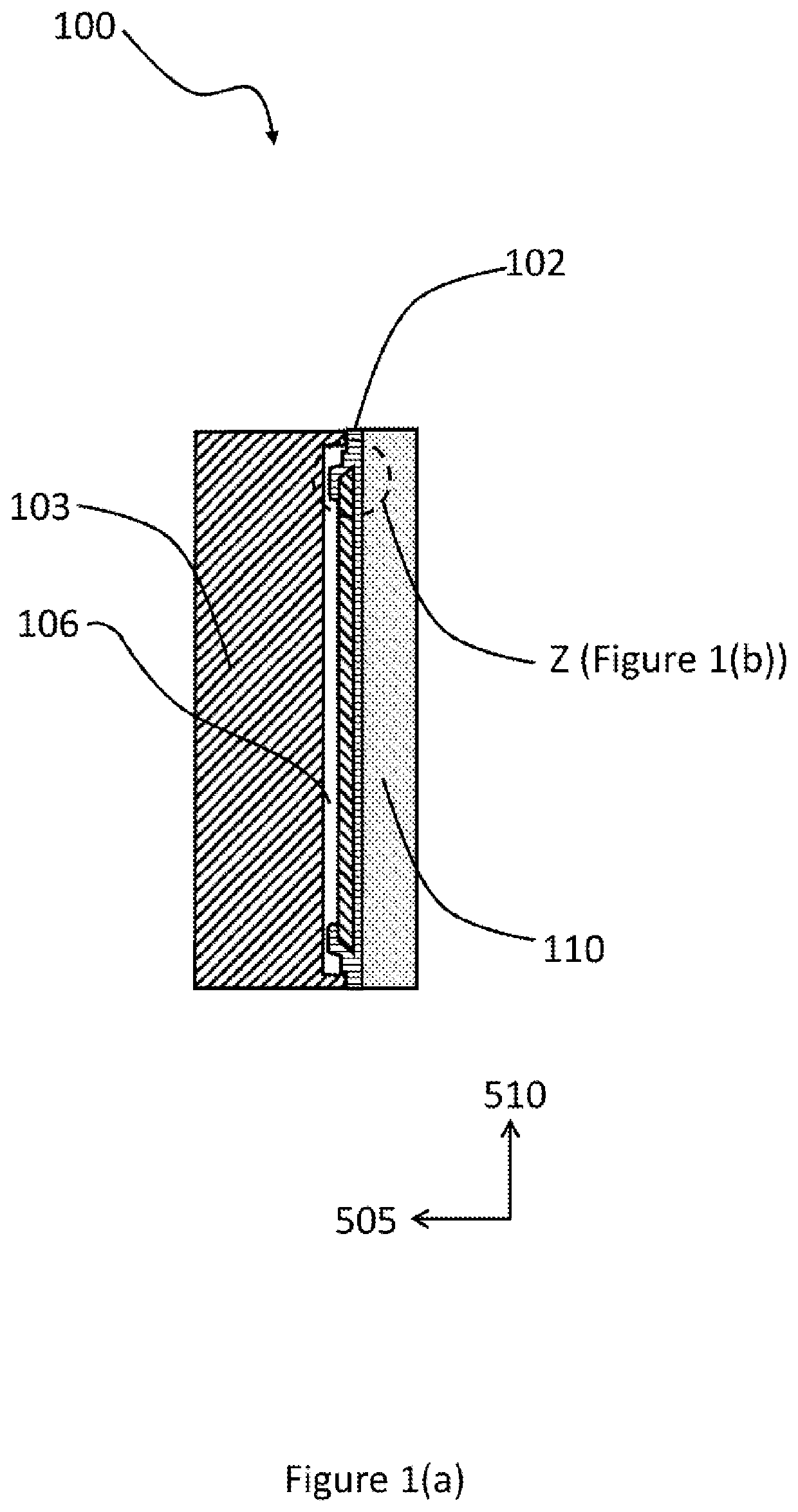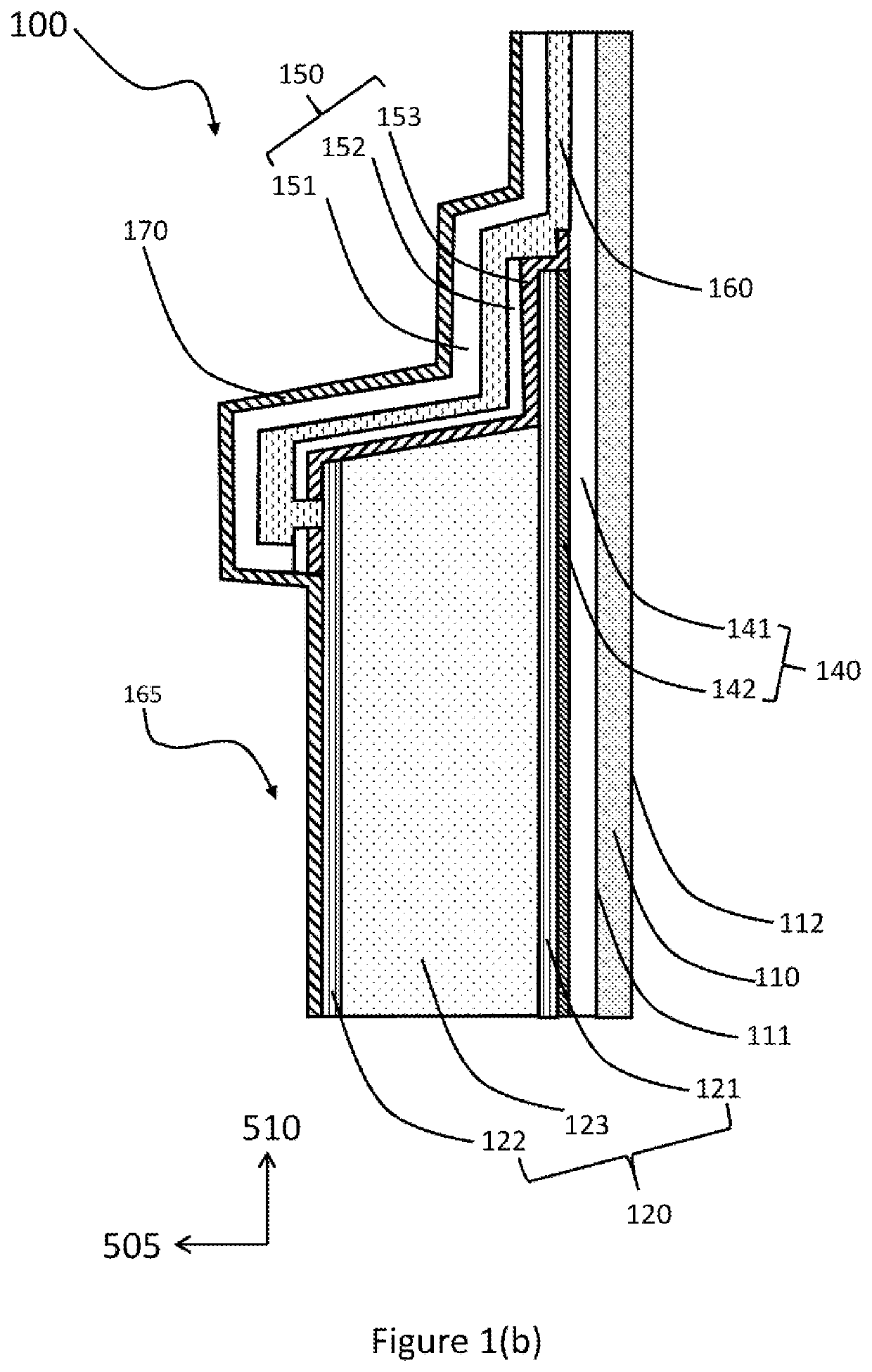Electrical component
a technology of electrical components and components, applied in the field of electrical components, can solve the problems of unrecoverable failure of electrical components, degradation of piezoelectric and electrical properties of materials, and ceramic materials that are not good conductors of electricity
- Summary
- Abstract
- Description
- Claims
- Application Information
AI Technical Summary
Benefits of technology
Problems solved by technology
Method used
Image
Examples
Embodiment Construction
[0044]The insulated electrical component for a MEMS device of the first aspect comprises a substrate layer comprising first and second sides spaced apart in a thickness direction, wherein one or more electrical elements are arranged over the first side of the substrate layer.
[0045]The material of the substrate layer is not particularly limited. The substrate layer may be a silicon wafer or in other examples the substrate may be made of stainless steel, magnesium oxide (MgO), glass, nickel or the like. The substrate layer may be a laminate of two or more layers, where different layers may have the same or different composition. In some embodiments, the substrate comprises an uppermost layer which is in contact with the electrical element and which comprises silicon oxide, silicon nitride or the like. One or more lower layers of the laminate may be different from the uppermost layer and, for example, may comprise silicon wafer, MgO, stainless steel, glass or the like.
[0046]One or more...
PUM
 Login to View More
Login to View More Abstract
Description
Claims
Application Information
 Login to View More
Login to View More - R&D
- Intellectual Property
- Life Sciences
- Materials
- Tech Scout
- Unparalleled Data Quality
- Higher Quality Content
- 60% Fewer Hallucinations
Browse by: Latest US Patents, China's latest patents, Technical Efficacy Thesaurus, Application Domain, Technology Topic, Popular Technical Reports.
© 2025 PatSnap. All rights reserved.Legal|Privacy policy|Modern Slavery Act Transparency Statement|Sitemap|About US| Contact US: help@patsnap.com



